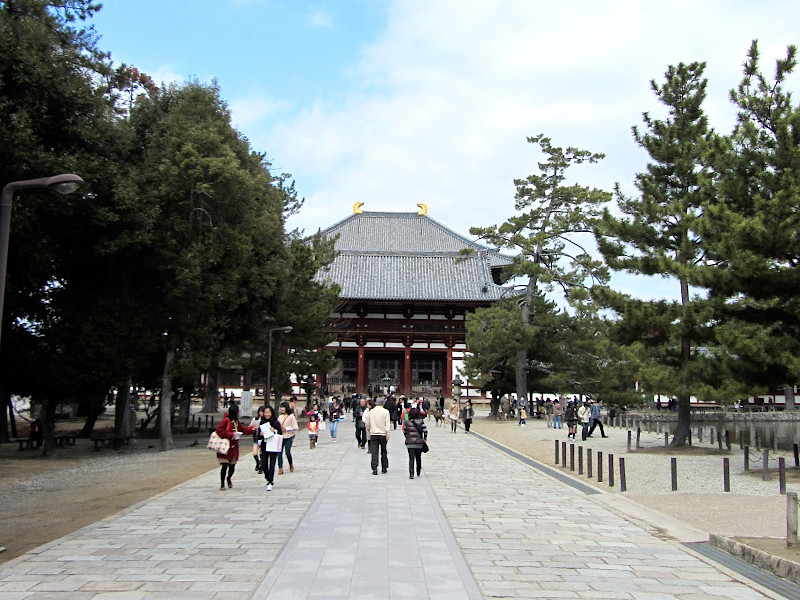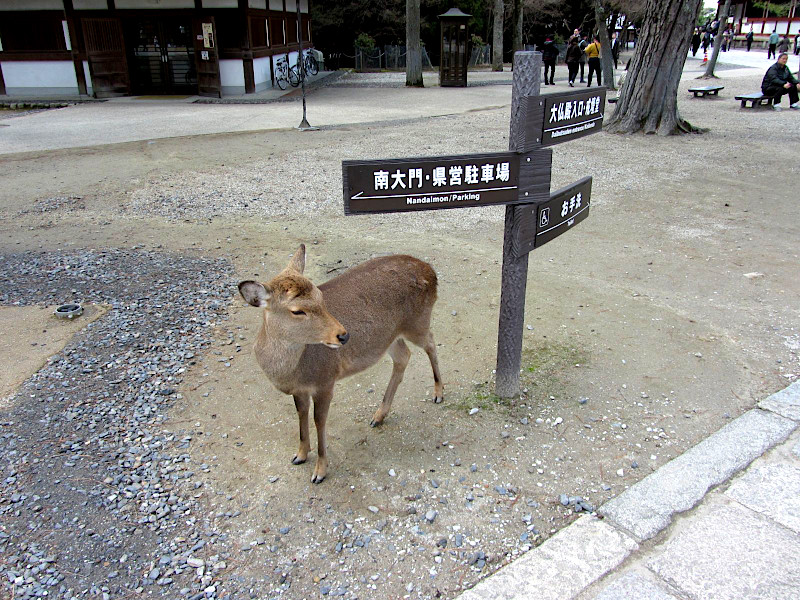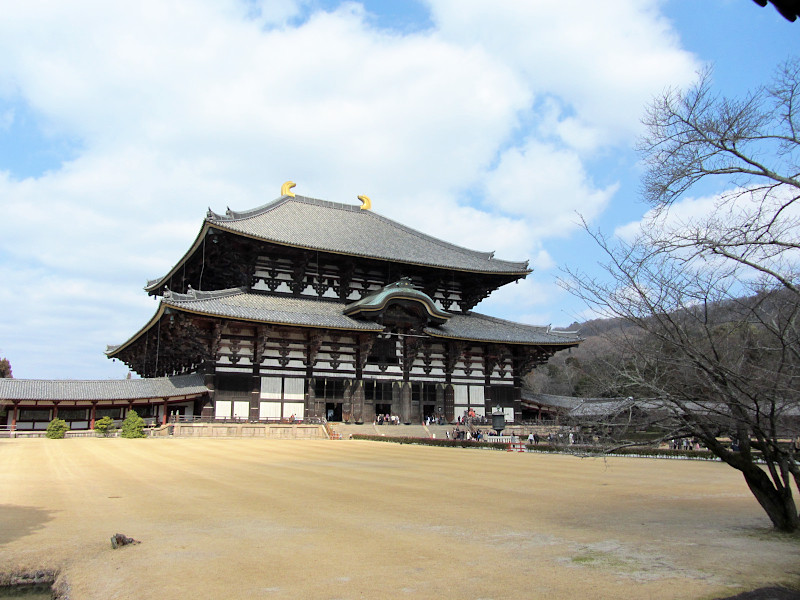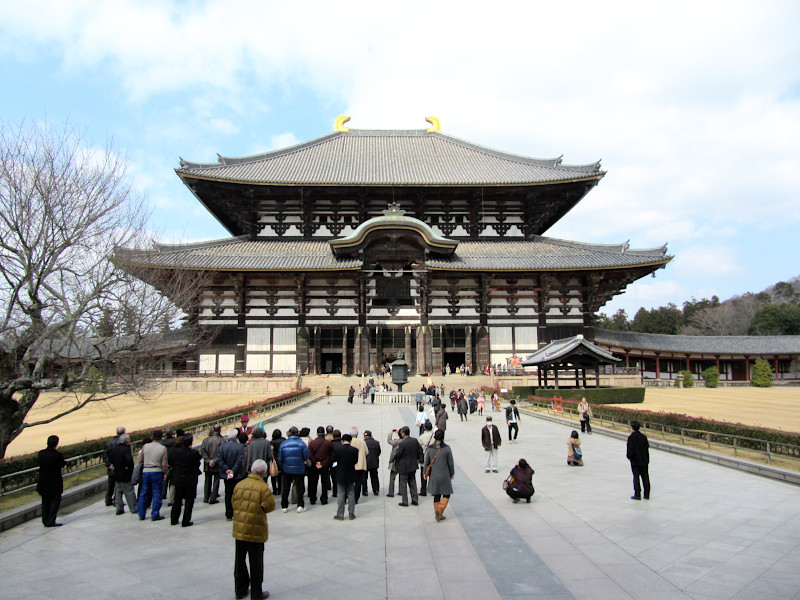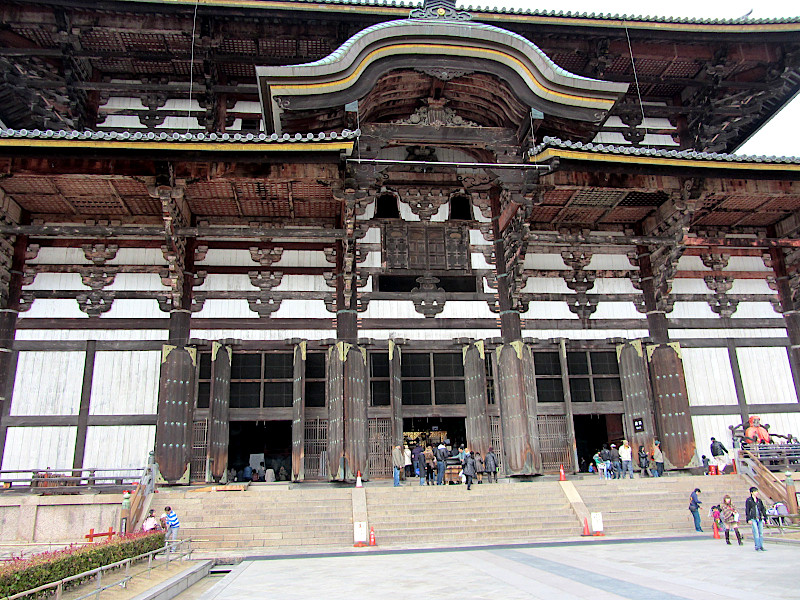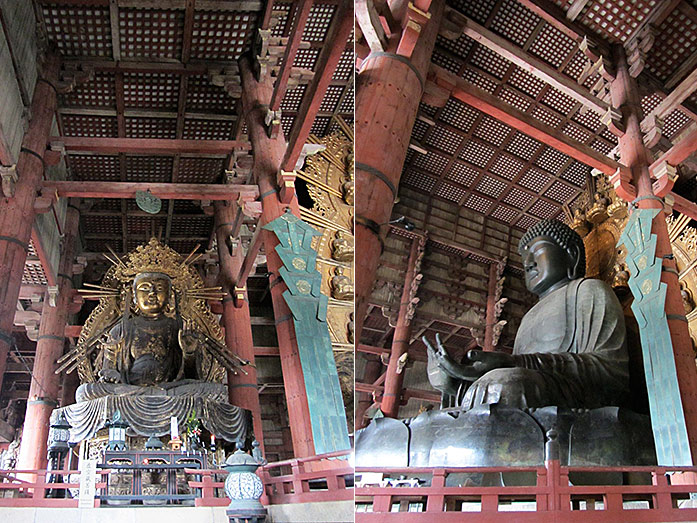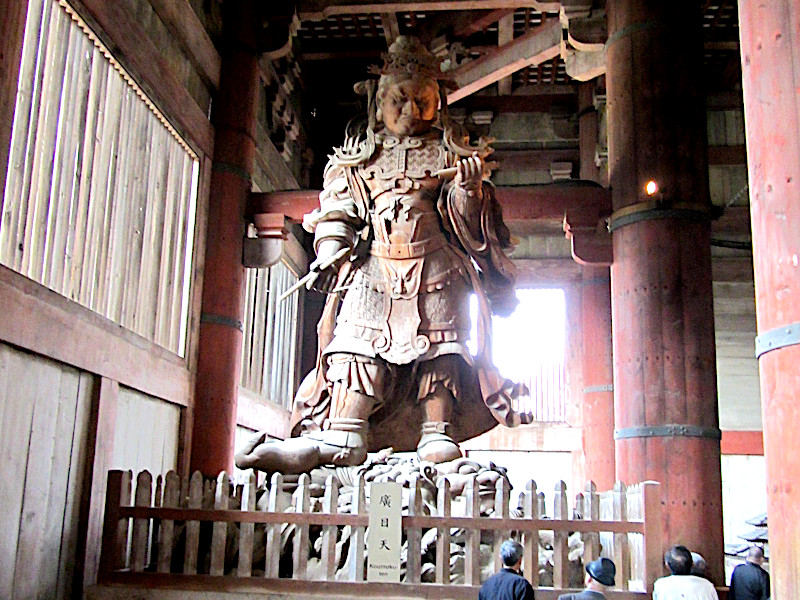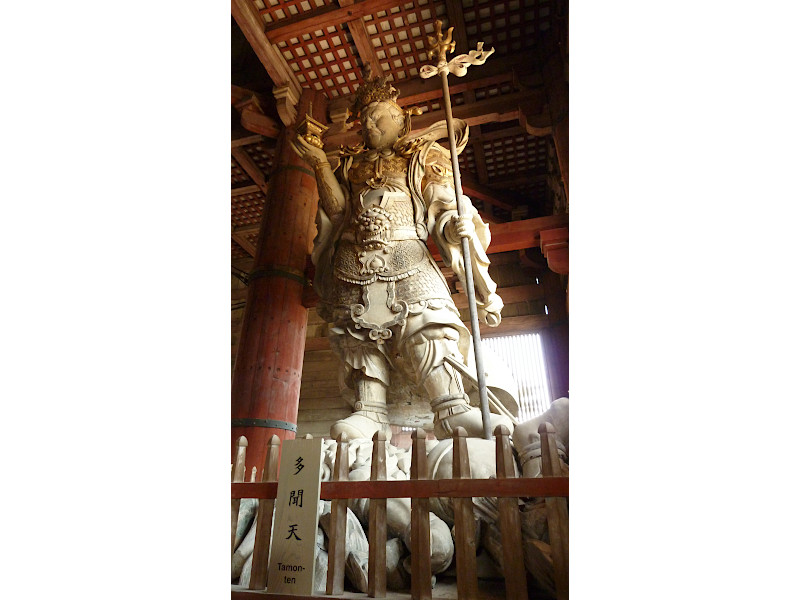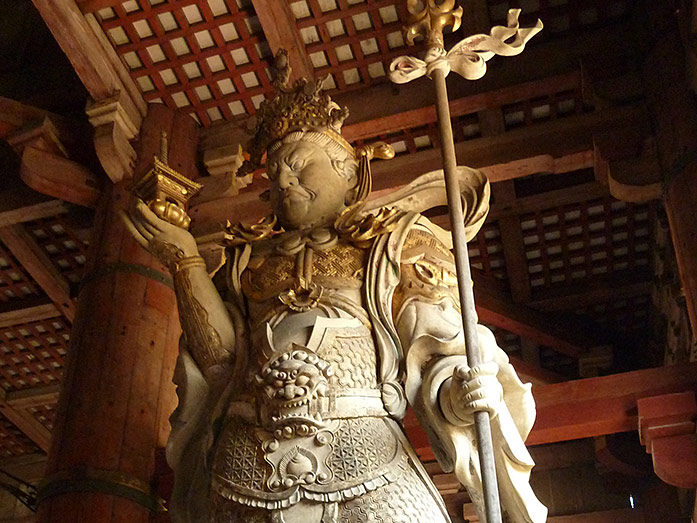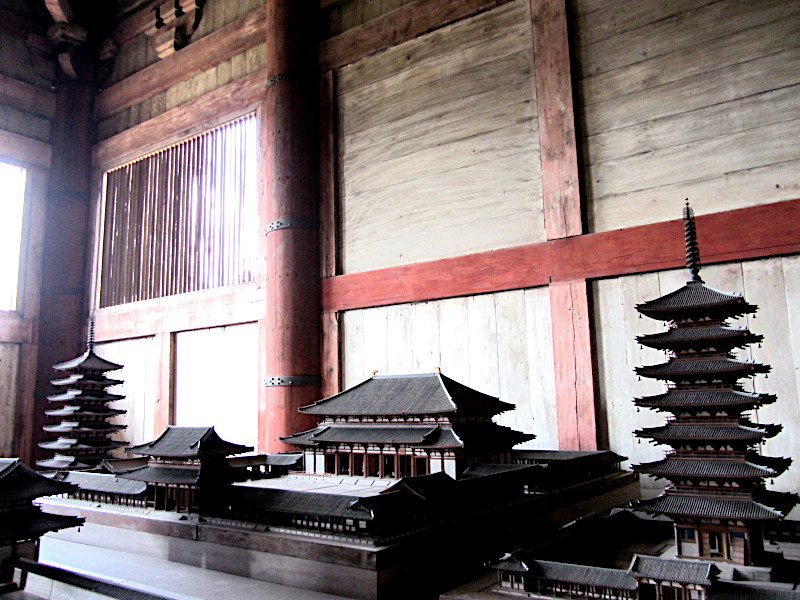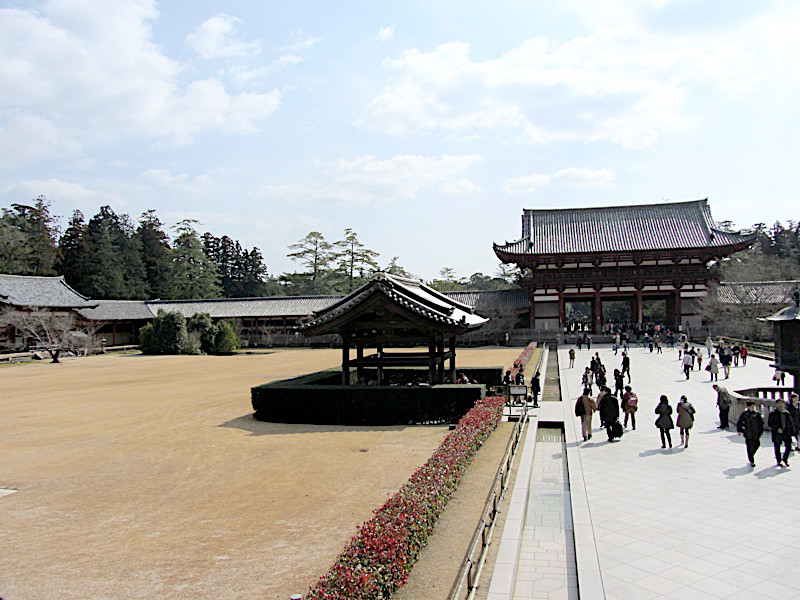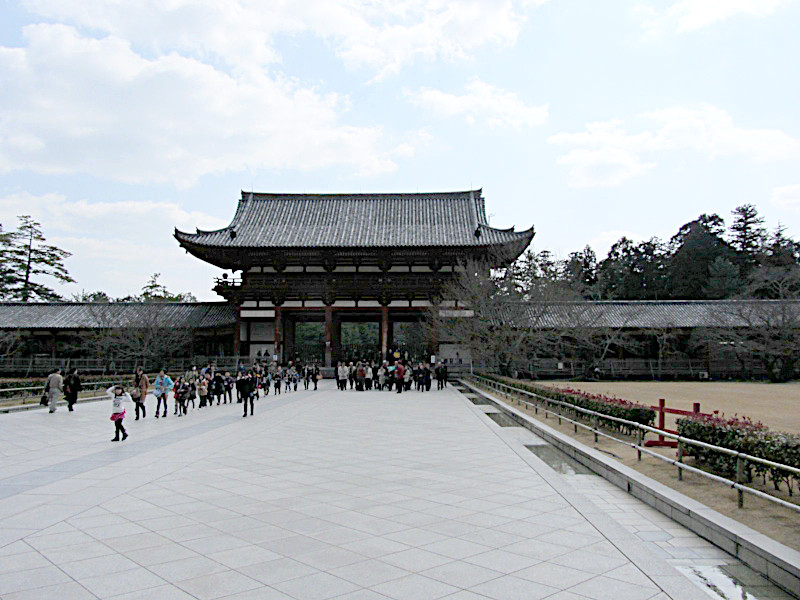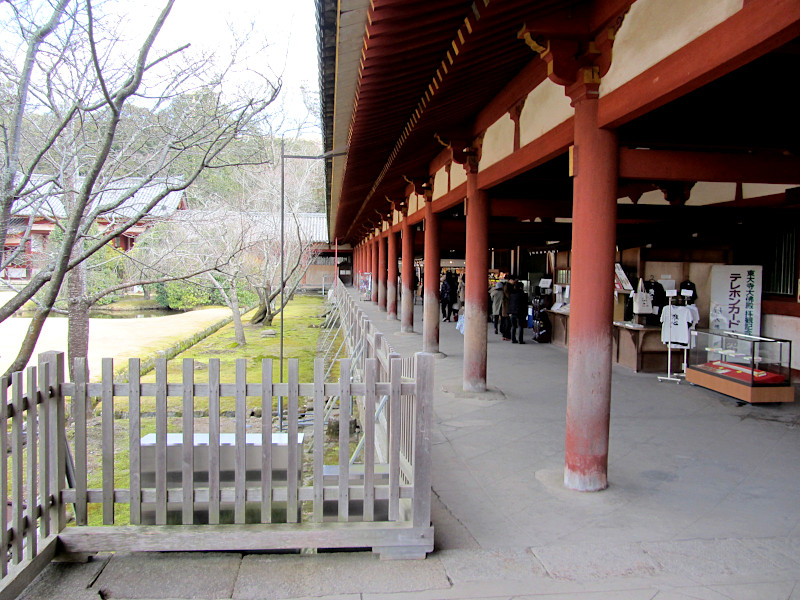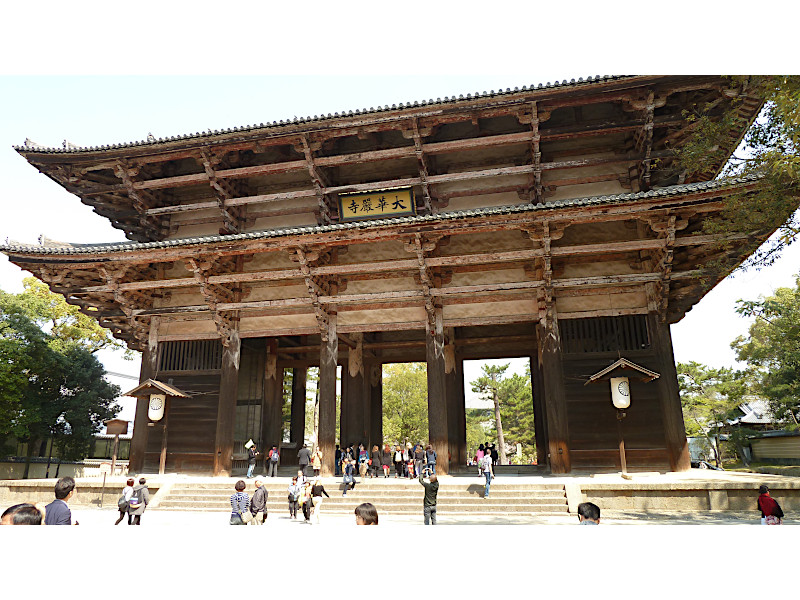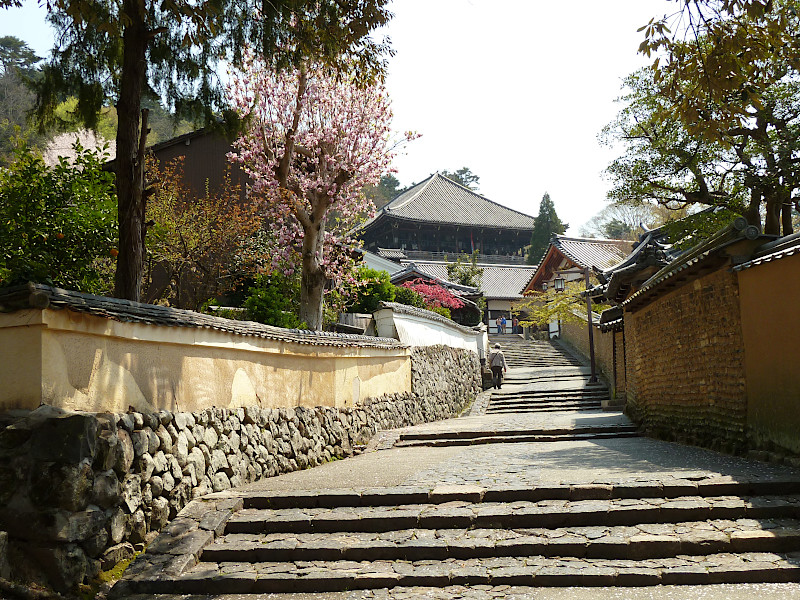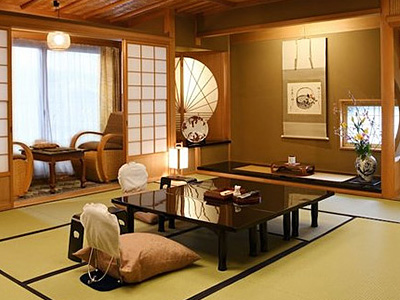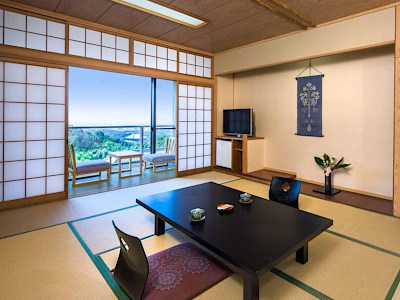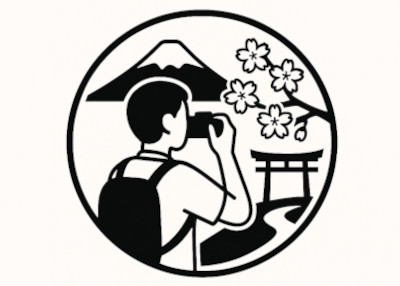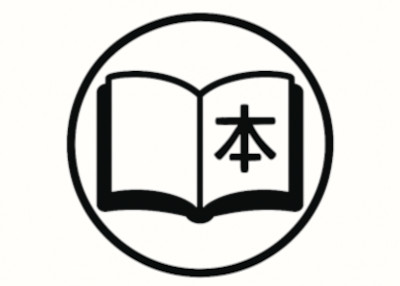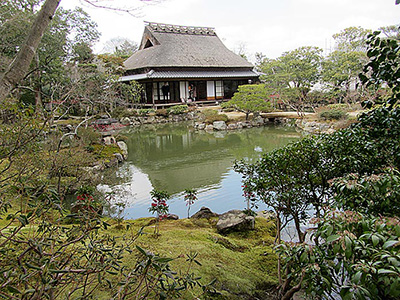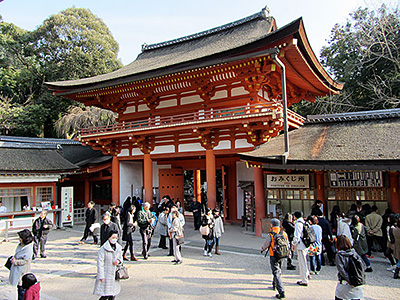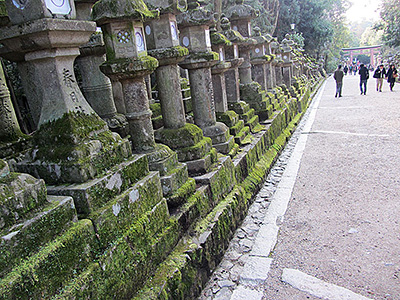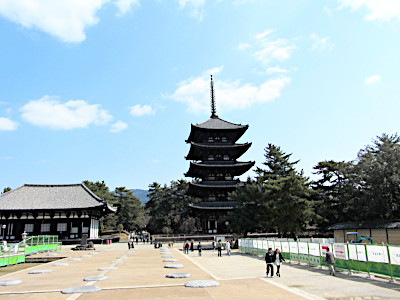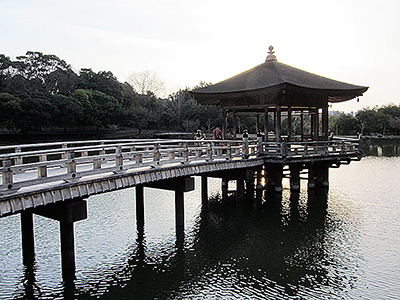Todaiji Temple in Nara
This post can contain affiliate links, which means that we may receive a small commission if you make a purchase using these links.
Facts & Figures
The Todaiji Temple ("Great Eastern Temple") in Nara is a UNESCO World Heritage Site and one of the most important Buddhist temples in Japan. It is also the center of the Kegon sect of Japanese Buddhism.
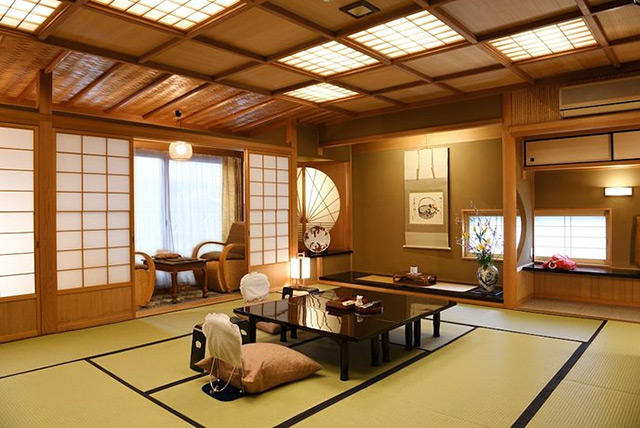 Experience the Ultimate Japanese Hospitality at a Nara Ryokan.
Experience the Ultimate Japanese Hospitality at a Nara Ryokan.
Find Your Perfect Ryokan Now >
The main hall of the temple complex is called Daibutsuden (Great Buddha Hall). Daibutsuden is with a height of 49m the world's largest wooden building. Can you imagine that what you see today is just two-thirds of the original size (reconstructed from 1692 - 1709). The hall itself contains with 14.98m height the largest bronze Buddha statue (Daibutsu) in Japan. The weight of the statue is nearly 500 tonnes. Kuninaka no Muraji Kimimaro (died 774), a Japanese sculptor with Korean roots, was the designer of the original Buddha figure. The second largest Buddha statue in Japan is called The Great Buddha of Kamakura. Todaiji, located within Nara Park, belongs to the - Big Three - temple highlights of Nara. The other two are Kofukuji and Horyuji. There is more to discover for you. The main temple's grounds boast vast gardens, museums, and treasure halls. Every year, people from Japan and around the world visit the temple to worship and pay their respects.
- Great Buddha Hall (Daibutsuden), Hokke-do, Kaidan-do and Todaiji Museum:
- Opening Hours - 8:00 am to 4:30 pm (Nov - Feb)
- Opening Hours - 8:00 am to 5:00 pm (Mar)
- Opening Hours - 7:30 am to 5:30 pm (Apr - Sep)
- Opening Hours - 7:30 am to 5:00 pm (Oct)
- Admission Fee - 800 yen (Adults), 400 yen (6 - 12 years old)
- Todaiji Museum + Great Buddha Hall (Daibutsuden) joint pass:
- Opening Hours - 9:30 am to 4:30 pm (Nov - Feb)
- Opening Hours - 9:30 am to 5:00 pm (Mar)
- Opening Hours - 9:30 am to 5:30 pm (Apr - Sep)
- Opening Hours - 9:30 am to 5:00 pm (Oct)
- Admission Fee - 1200 yen (Adults), 600 yen (6 - 12 years old)
My tips for local activities
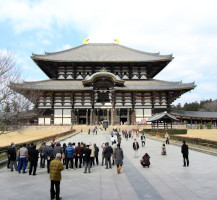
How about exploring the highlights and hidden gems of the fascinating city Nara with a local guide? The personalized tour by our partner GetYourGuide can take between 2 - 6 hours. For more details check out this page >
History
Todaiji Temple in Nara was commissioned by Emperor Shomu (724 - 749). The temple complex was finally completed in 752 after 15 years of construction. Todaiji Temple grounds covered an area of nearly 5 square km. It was the most powerful monastery during the Nara period (710 – 784). At that time Nara was the capital of Japan. The Daibutsuden (Great Buddha Hall) opening ceremony in 749 was attended by more than 10 000 people. Buddhists from China, India, Japan, and the entire imperial court admired there the largest bronze Buddha statue of Vairochana (Birushana Butsu) in the world. Before the capital of Japan moved from Nara to Kyoto in 795 Todaiji Temple belonged to the Seven Great Temples of Nara (Nanto Shichi Daiji). The other 6 were Saidaiji (Great Western Temple), Yakushiji, Horyuji, Gangoji, Daianji (Great Peace Temple) and Kofukuji. The main hall was in its history twice destroyed by fire. The first one happened in 1180. The hall was rebuilt in 1709, following a huge earthquake, which took place during the Edo Period (1603-1867). Major renovation work was done from 1974 until 1980. The last restoration of the bronze statue happened in 1692. The Todaiji Temple is still to this day the Japanese headquarters of the Kegon school of Buddhism. Since 1998 the temple has the status of a UNESCO World Heritage Site.
Location

The Todaiji Temple complex is located in the nothern part of the Nara Park.
Address: 406-1 Zoshicho, Nara, 630-8211, Japan
How to get to Todaiji Temple?
- 35min from JR Nara Station served by Yamatoji, Nara, Gakkentoshi, Sakurai Line
- 30min from Kintetsu Nara Station served by Nara and Kyoto Line
Sightseeing spots at the temple grounds of Todaiji
Top:
Daibutsuden (Big Buddha Hall) - This huge wooden construction/hall is an impressive sight and will leave you speechless. Check out these numbers: length of 57 meters, width of 50 meters, and height of 47 meters.
Great Buddha statue (Daibutsu) - Nearly 2.6 Mio. people helped to construct the bronze statue and the hall - a must-see destination on your Japan trip. This is a depiction of Dainichi Nyorai (Vairochana), the main deity of the Kegon sect, with his hand raised in a teaching gesture. The statue is designated as a national treasure by the Japanese government.
Nandaimon Gate - The large wooden gate (designated national treasure) was rebuilt in 1195 and is known for its two 7m tall guardian gods (nio). These wooden statues protect the temple from evil forces.
Todaiji Museum - You will find this museum near Nandaimon Gate on the way to Daibutsuden (Big Buddha Hall). It was opened in 2011. The museum contains a large collection of Buddha statues, religious art, and cultural treasures.
Shoro (Belfry) - It has the second-largest bell in Japan.
Huge bronze octagonal lantern - The lantern can be found on the wide pathway between the Daibutsuden (Big Buddha Hall) and Chumon Gate.
Kagami-ike (Mirror Pond) - Take a moment to relax at the pond (right behind the Daibutsuden) and enjoy the beautiful reflections of the temple structures at the surface.
Nigatsudo (Second Month Hall) - This is the place where the amazing Omizutori ceremonies are held in March.
Hokke-do (Lotus Hall/Third Month Hall) or Sangatsu Hall - It is the oldest structure of the Todaiji Temple. Some parts date back to the 8th century. The hall contains an impressive collection of Buddha statues. One of them is the well-known 3.6 metre tall representation of an eight-armed Buddha with a large black pearl placed on its forehead. In the old days, monks came here every year to recite the Lotus Sutra (Hoke-kyo) during the third month (sangatsu) of the lunar calendar.
Shoso-in (Treasury) - The repository is one of the surviving structures of the temple. You will find here over 9000 sacred art objects (more than 600 personal objects belonging to the emperor Shomu) like textiles, masks, weapons, and much more. Some of them were gifts to the temple by empresses and emperors. Shoso-in is not open to the public.
Nara Park - Enjoy the red deer there:) They love to eat special crackers called shika senbeie. You can buy these crackers for appr. 150 yen. Read more >
Festival & Events (dates can change without notice)
March
Omizutori Festival (1st - 14th)
This Japanese Buddhist festival dates back 1000 years. Priests at the Todaiji Temple perform rituals (called Shuni-e) for 14 days. They pray for world peace and, a rich harvest, and confess their sins. A very special event during these 14 days is Otaimatsu. Priests ran with huge pine torches through the corridors of the Nigatsu-do Hall. It is said that if you get hit by these fire sparks no evil thing will harm you. Don't miss out on the Omizutori ceremony on the 13th of March. Water is being collected by priests in front of the Todaiji Temple. It is believed this water has the power to cure diseases.
August
Toka-ye Lantern Festival (5th - 14th)
Thousands of candles are lit everywhere in Nara between 7:00 pm and 9:45 pm. Enjoy this special atmosphere in Nara Park, temples and gardens.

